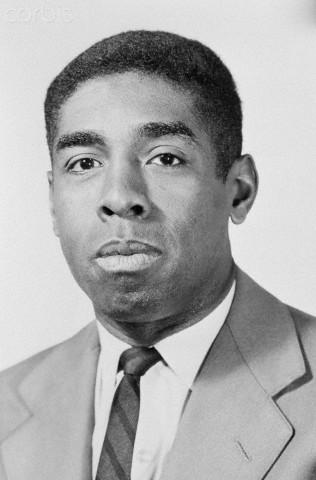Black History Month: Harold Amos – The First African-American Microbiologist


His mother, Mrs. Lola was adopted by the Quaker family since her childhood years, the family took her in and gave her a home as well as home schooling her together with their own children. When she got married to Mr. Howard, the Quaker family maintained close ties with Mrs. Lola and they supplied her family with various reading materials. At one time, the Quaker gave Mrs. Lola’s family a certain book that was the biography of Louis Pasteur and Harold became fascinated when he read it. This was the trigger that initiated the interest in microbiology by Harold Amos. Specifically Harold was intrigued by how Pasteur used goats as experimental animals, in addition to his natural dislike for his family goats that made Harold all the more interested in Microbiology.
Harold attended a segregated school in his home Pennsauken, and graduated top of his class. From which he attended the Camden High School found in New Jersey where he graduated in 1936 to join Springfield College in Springfield, Massachusetts. He graduated from Springfield College with Summa Cum Laude (with the highest honors) in 1941 having majored in Biology and a minor in Chemistry. He then took a position of a graduate assistant at the institution’s Biology Department. He left this position and joined the US Army in 1942 as a warrant officer in the battalion which supplied gasoline to the troops. This lead to him serving in England for 2 years and got into France some 6 days after the Normandy’s invasion. He was later on discharged from the army in 1946, but his experience left a lifelong love for France in Harold (probably what lead to him being an avid Francophile).
He returned to the US on the fall of 1946, and soon afterwards enrolled for a Biological Sciences’ graduate program at the Division of Medical Sciences at the Harvard Medical School. He graduated with his M.A in 1947 and pursued a PhD shortly afterwards and earned it in 1952, thereby becoming the first African-American ever to get a doctoral degree from this Division. Harold became a graduate student to Mr. Howard J. Mueller, who served as the chairman of the then called Department of Bacteriology and Immunology, but currently known as Microbiology and Molecular Genetics. Mr. Muller made ground breaking achievements by the discovery of methionine by studying the bacterial nutrition back in the days of breadth. Considering that Harold’s thesis was on virology on the agents that are affecting the Herpes virus infectivity by using plaquing found on the chick chorio-allantoic membrane. This earned Harold a Fulbright Fellowship which took him back to France to the Pasteur Institute. At the institute he worked on threonine mutants of Escherichia coli in the Georges Cohen laboratory facilities.
At the time Harold was at the Georges Cohen laboratory, it was the time the facility was considered the Mecca for American scientists. When he returned to Harvard Medical School as a member of the faculty, he wrote a paper on the E. coli and its phages with his most notable one being the one he wrote in 1958 of finding of the 5-methylcytosine in the E. coli RNA, which was decade ahead of its time, (it was only later confirmed decades afterwards). Shortly after his work on the E. coli, he focused back on animal cells which was not in line with employing viruses as the probe of higher cells function, but rather the focus was directly on the cells. For a period of more than 30 years, he spearheaded an unusual wide array of studies: such as use of bacterial RNA to program the synthesis of higher cell proteins, insulin, ribosome, enzyme inductions, serum, phosphoproteins, RNA metabolism and perhaps notable one on thread on glucose starvation, transport and hexose metabolism. All this knowledge and interest in Microbiology led to Harold getting national level recognition and participation on issued dealing with bio-medical research and education.
He retired from Harvard Medical School after making numerous high profiled achievements and receiving equally high profiled awards. But soon joined the Minority Medical Faculty Development Program (MMFDP) sponsored by the Robert Wood Johnson Foundation as its first National Director where he served till 1994. This program was renamed to Harold Amos Medical Faculty Development Program in 2004, after his death from a stroke on the 26th February 2003.



